Porcini Heaven. There are friends, and then friends who bear gifts of mushrooms. Not the common white kind but GOLDEN mushrooms, such as porcini. And in this case it seems he brought me literal pocket gold, as I noticed the price of $39.99 per pound for these at the local grocery.
A few years ago, he was kind enough to take me mushrooming a couple times, and recommended the above books. I loved the experience of tromping around the forest in the early morning light, smelling the fresh earthy smell and carrying a cute wicker basket. I noticed that mushroomers are rather protective of their special secret territories, and will hop up at the drop of a hat when there has been a rain conducive to mushroom growth.
So he dropped off quite a weighty bunch of porcini, and advised me that I must cook them no later than the next day, and that the best way to keep them would be in a colander, with a damp towel draping over the top.
So how does one prepare these? Well, the first thing I found out, was that unlike buying them in the grocery store where this is pre-done, when you harvest them from the wild, you need to remove their the spongy part that is attached to the 'green gills'. You can see in the above photo, I've loosened the gills from the cap, and then I tore it off cleanly. Honestly, this task made ME turn green under the gills and wonder who ever had the bright idea of ever eating these in the first place???
As my friend suggested, I reserved the green gills aside, as they can be put in a cheesecloth and simmered in water to make a delicious porcini broth.
So now I had some beautiful, cleaned porcini (I used my mushroom brush to clean the remainder of the mushrooms).
Now on to the chopping - which can be done to your preference, it doesn't matter if its lengthwise or crosswise. I chose crosswise.
I got a large bowl of pieces from the three gigantic porcini, and it was ready to saute.
My friend advised to use olive oil to smooth out and reduce the amount of butter, but to also use butter liberally, along with pressed garlic cloves (5) . So I used about a quarter cup of organic extra virgin olive oil, and half a stick of organic unsalted butter... then part way through I though, why should I skimp on the butter with rare ingredients like these! So I threw in the other half stick of butter! OK, maybe a whole stick was rather excessive since it started looking a bit like butter soup flavored with mushrooms, but it STILL tasted delightful.
But why care when a most delicious slice of toasted, very fresh multi-grain bread was the base to soak in the saucy excess? I had to serve it with a sharp steak knife as I thought this meaty-mushroom and crisp weighty bread deserved no less. So delicious!
Wikipedia has a nice write up of Porcini. Many myths have been spread about mushrooms. One of the most inaccurate is that mushrooms have no nutritional value. To properly consider them for their nutritional benefits, they must be viewed from a dried weight perspective. And mushrooms give you maximum nutritional benefit only upon cooking. Mushrooms are relatively high in protein, averaging about 20% of their dried mass. Further they contribute a wide range of essential amino acids. Low in fat (between .3 and 2%) and high in fiber, mushrooms also provide several groups of vitamins, particularly thiamine, riboflavin, niacin, biotin, ascorbic acid and Vitamin D. For more information on the nutritional properties of mushrooms, Paul Stamets, founder of Fungi Perfecti, published an extensive study of 24 major nutrients in 16 mushroom species and varieties. See: Stamets, P., 2005. “Notes on Nutritional Properties of Culinary-Medicinal Mushrooms”, International Journal of Medicinal Mushrooms, vol. 7: 103–110.
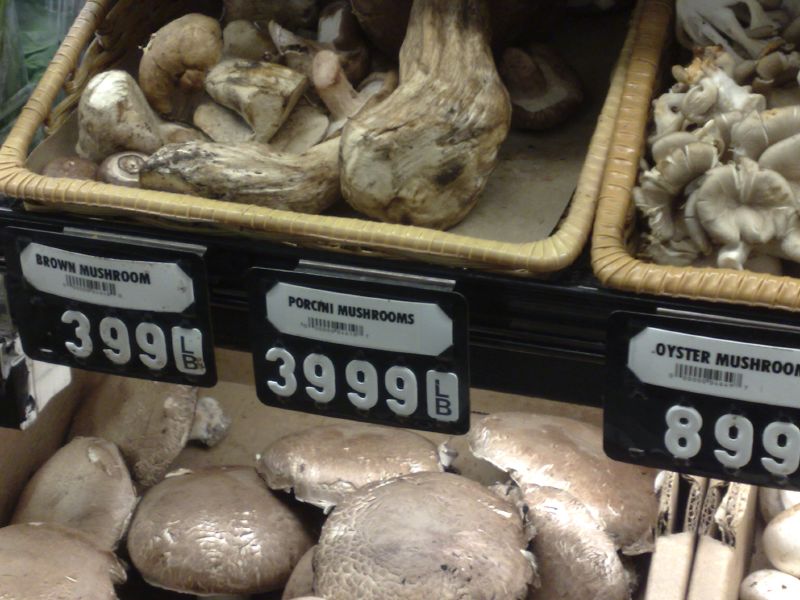
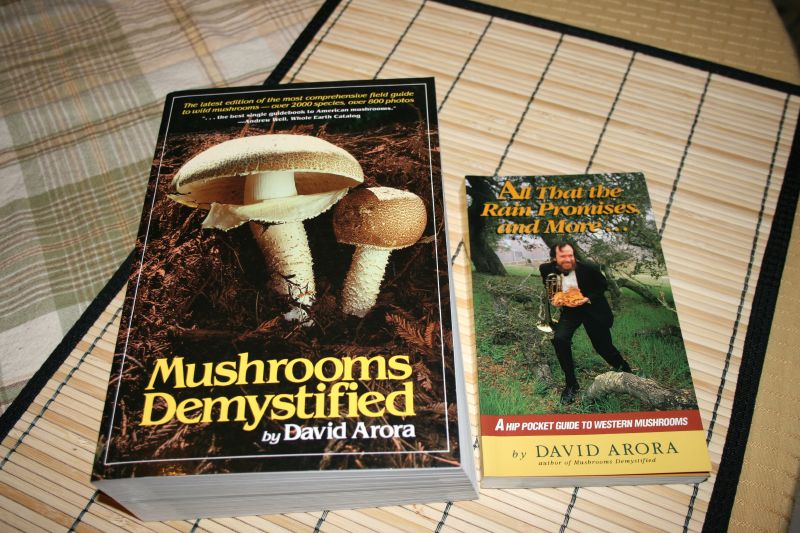

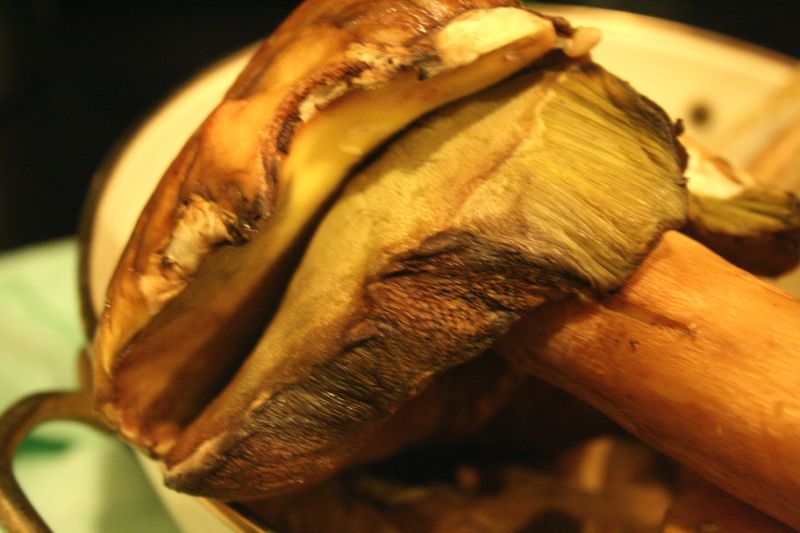
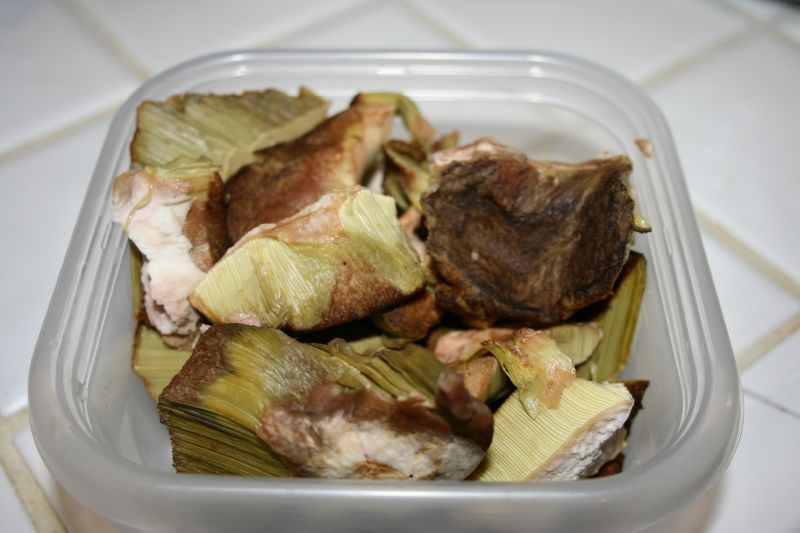

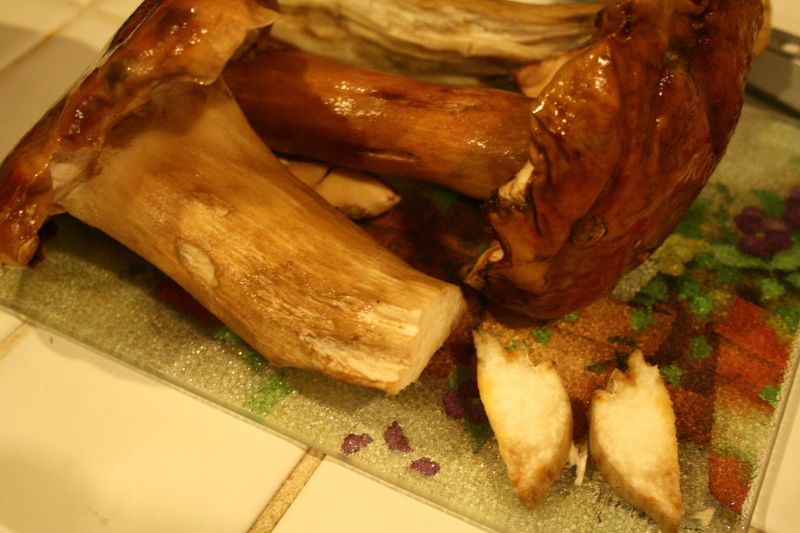
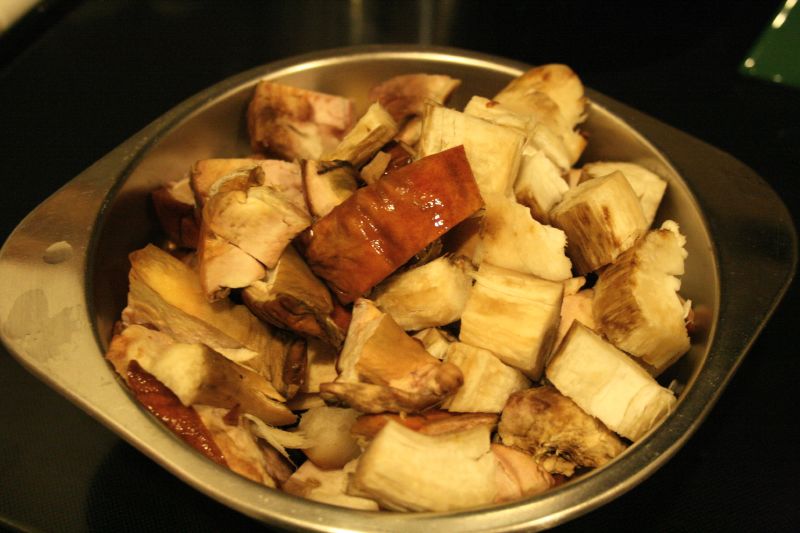
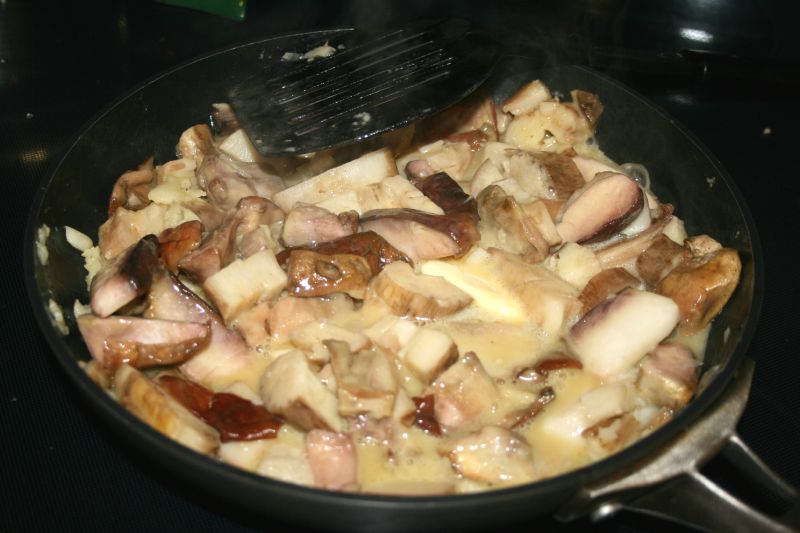
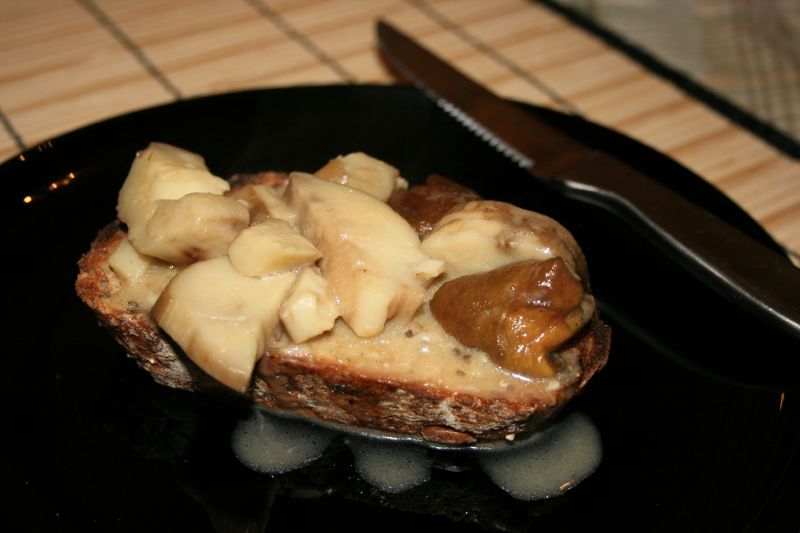










6 comments:
Ahhh Anna, you hit the mushroom jackpot!
I'd love to learn about mushroom picking and actually go on a hunt...lucky you!
What a fascinating post. I had no idea that the mushrooms we buy in the store have the gills removed (and actually I'm not even sure I knew that mushrooms had gills!) I can imagine how absolutely delicious this simple dish must have tasted. I've only had fresh porcinis a few times, but they're heavenly.
I think only the 'bolete' kinds of mushrooms with the spongy material and extra gills need the cleaning up in that way. This dish was heavenly!
Ok, let me jump in here. I have been gathering boletes for years, as there are many where I live, including in my yard. First, I agree with your friend that David Arora's books, especially Mushrooms Demystified, are the best ones out for mushrooms advice.
The gills (although with boletes, I think of them as pores). If you gather boletes right when they come out of the ground, the pores are firm and fresh and should never be removed. When you see boletes in the store, it is usually these firm ones that are considered to be higher quality and can withstand trips to markets and earn a high price. When boletes get older, the pores turn spongy and greenish yellow, as you show in the photograph, and then I remove them. So it's more the age and quality that dictates whether the pores need to go, as opposed to the variety of mushroom.
Cooking mushrooms -- for years I did them just as you describe, and loved them, and loved the wonderful butter. But then I read a book by Tom Colicchio, who was very disdainful of my favorite cooking method. He advises that mushrooms will have better flavor if you cook them in small batches, so they fry rather than stew, and if you do this they taste better. So I tried his method, and he was right. Oh sometimes I get lazy, and throw them all in with the butter (and shallots) and let them stew (stewing is easier), but usually I go with the Colicchio method.
Thanks for the post -- I love most boletes, but particularly boletus edulis. Wish I had some now!
PS: I do disagree, however, with the advice to keep boletes covered with a damp towel. Moisture is the enemy of mushrooms. They need to be kept as dry as possible. If it is necessary to store them, brown paper bags are, in my opinion, the best option.
Peter: Hope you get to gather mushrooms sometime, it is a lot of fun, and so gastronomically rewarding!
Laurie: Thanks SO much for your detailed comment. The porcini I spotted at the store already had its pores removed, so the ones I saw there must have been older too -- this is good info to have! My friend also told me to cook them in small batches, but I was in a time crunch and didn't know it would make such a difference. Next time...
Post a Comment